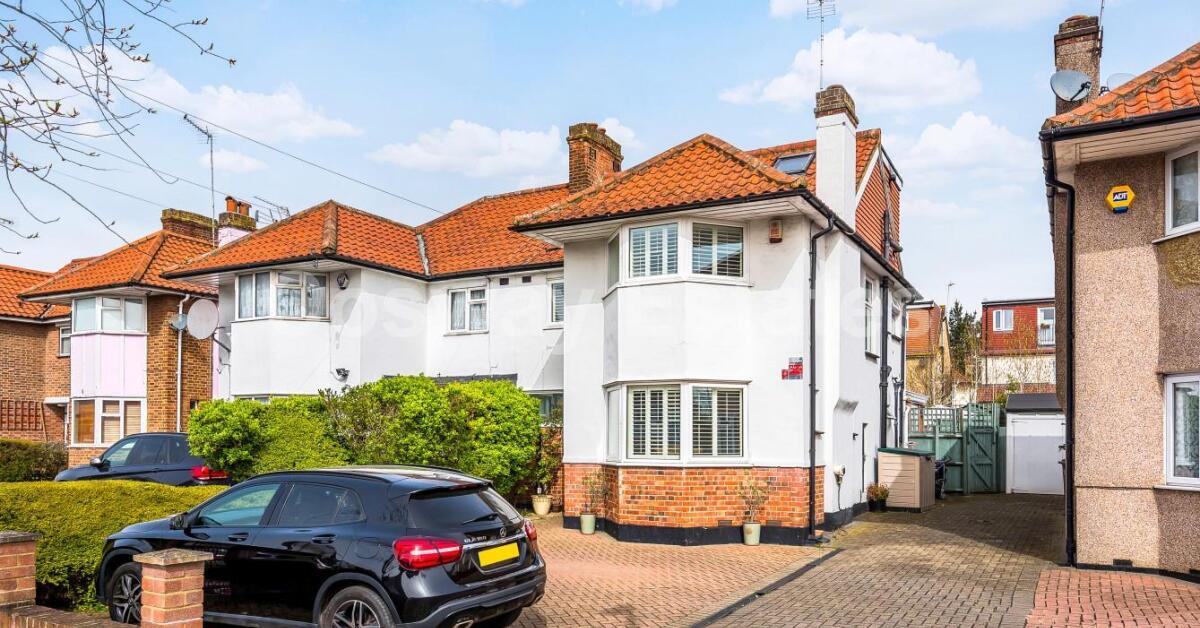What’s Happening With UK House Prices?

Key Takeaways
- Modest Growth Ahead: UK house prices are forecast to rise only slightly in 2025 — between 1% and 3% — before stronger growth returns from 2026 as mortgage rates fall and wage growth improves.
- Policy Uncertainty Weighs on Demand: Rumours of a stamp duty overhaul and new property taxes have slowed high-value market activity, especially for homes priced above £500,000.
- Regional Divide Deepens: The North and Midlands continue to outperform the South and London, where affordability pressures and oversupply are keeping price growth subdued.
Latest Property Market Moves and 2025 Forecasts
The UK housing market is showing tentative signs of recovery, but optimism remains cautious. After a muted summer, property activity began to pick up following April’s stamp duty changes, yet a cloud of uncertainty hangs over the market as the Autumn Budget approaches. The question for homeowners and buyers alike is simple: where are house prices heading in 2025 and beyond?
UK House Prices: What’s the Latest Data?
According to Halifax, the average UK house price fell by 0.3% in September to £298,184 — a drop of £794 from August. Annual price growth slowed to 1.3%, down from 2% the previous month. Nationwide, however, reported a 0.5% increase in prices for the same period, highlighting the divergence between lenders’ data.
These variations are expected: both lenders analyse their own mortgage transactions, so they measure slightly different parts of the market. For the most comprehensive view, analysts rely on the official HM Land Registry data, which includes both mortgage and cash purchases — but with a six-week delay.
At this point, most indicators suggest the housing market is stable but subdued. Prices have hovered within a narrow range through most of 2025, and neither buyers nor sellers have a clear advantage. Halifax’s head of mortgages, Amanda Bryden, said September’s small dip “reflects a broadly stable housing market,” adding that while affordability challenges persist, falling mortgage rates and steady wage growth are helping buyer confidence recover.
Factors Affecting the Housing Market
1. The Autumn Budget and Tax Uncertainty
The biggest short-term wildcard for the property market is the upcoming Autumn Budget. Analysts warn that changes to property taxes — especially a potential replacement of stamp duty — could reshape demand.
Rumours suggest the government may introduce an annual property tax for homes valued above £500,000. The uncertainty has already cooled high-end activity: Zoopla reports that demand for properties over £500,000 fell by 11% and new listings dropped by 9% since late August. Buyers and sellers appear to be waiting for clarity before committing to major transactions.
2. Mortgage Affordability and Interest Rates
Mortgage costs have come down from their 2023 peaks but remain far higher than those seen during the low-interest era of the 2010s. Even with wage growth, many buyers are still struggling to afford repayments.
Karen Noye, mortgage expert at Quilter, said “affordability pressures are still weighing heavily on the market, especially in London and the South East, where homeownership remains out of reach for many.” High interest rates and tighter lending rules have made deposits and monthly payments a challenge for first-time buyers.
3. Regional Disparities
The housing market is far from uniform across the UK. According to HM Land Registry data, prices rose 0.3% in July and were up 2.8% year-on-year — slower than June’s 3.6%. Northern Ireland recorded the strongest annual growth at 5.5%, followed by Scotland at 3.3%, England at 2.7%, and Wales at 2%.
Within England, the North East saw the fastest growth at 7.9%, while London continued to lag at just 0.7%. This highlights how affordability and regional economies are driving very different outcomes across the country. Northern and more affordable markets are outperforming high-cost southern regions, where rising supply and weaker demand are keeping price growth low.
Asking Prices Show Signs of Pressure
Rightmove’s latest data shows asking prices in mid-September were 0.1% lower than a year ago, despite a 0.4% rise earlier in the month. The average property listed on the site now stands at £370,257 — around £500 less than in September 2024.
The South of England remains a key area of oversupply. The number of homes for sale there is up 9% year-on-year, compared with just 2% elsewhere. Properties are also taking about five days longer to sell in the South compared with the North and Wales.
Matt Giggs, founder of estate agency The Giggs Group, noted that “sellers who reduced their price expectations over the summer are now creating more realistic conditions for sales, which is keeping things moving.” In a buyer’s market, realistic pricing remains essential.
Forecast: What Will Happen to House Prices in 2025?
Expert Predictions for 2025
Most forecasters agree that 2025 will be a year of modest growth — a stabilisation period before stronger recovery later in the decade.
- Savills expects house prices to grow by just 1% in 2025, down from its previous 4% forecast. However, it predicts 4% growth in 2026, 6% in both 2027 and 2028, and 5.5% in 2029.
- Knight Frank has cut its 2025 forecast to 1%, expecting improvement thereafter — 3% in 2026, 4% in 2027, and around 5% by 2029.
- Nationwide projects growth between 2% and 4% in 2025, depending on interest rates and lending conditions.
- HomeOwners Alliance predicts approximately 2% growth for 2025, slightly below earlier estimates.
Taken together, most forecasters are pointing to growth of around 1%–3% in 2025, with stronger acceleration from 2026 onwards.
Drivers Behind the Forecasts
Savills and Knight Frank both expect wage growth and easing mortgage rates to boost affordability over time. Savills forecasts average earnings to rise by 22% between 2025 and 2029, helping restore buyer confidence and expand borrowing capacity.
The Bank of England has already signalled that it is comfortable with a higher proportion of new mortgages exceeding 4.5 times a borrower’s income — up from 10% to around 15%. This change could allow average buyers to borrow roughly £28,000 more, which may gradually lift demand in 2026 and beyond.
The Long-Term Outlook: 2026 to 2029
Looking further ahead, both Savills and Knight Frank forecast that the UK property market will regain momentum as inflation eases and the economy stabilises. They predict that lower mortgage rates and improving wage growth will underpin a period of steady appreciation across most regions.
Savills projects 4% growth in 2026, followed by 6% annually in 2027 and 2028, and 5.5% in 2029. Knight Frank offers slightly more conservative figures but expects the same upward direction.
Both firms expect stronger performance in northern England, the Midlands and parts of Wales, where affordability remains attractive and employment prospects are improving. In contrast, high-value southern areas may continue to underperform as tax changes and higher running costs weigh on demand.
What Buyers and Sellers Should Know
For Buyers
The current market could offer opportunities for those with stable finances. With fewer buyers competing, sellers are more open to negotiation. Fixed mortgage rates have stabilised, and locking in early could provide protection against future rate rises.
However, affordability remains tight, so buyers should focus on properties within their realistic budget. Price growth in 2025 is expected to be minimal, meaning this is not a time for short-term speculation but for long-term planning.
For Sellers
Sellers should be pragmatic. Over-pricing can cause listings to stagnate, particularly in regions where supply is rising. Those who adjust their price expectations early are more likely to secure a sale.
In areas with steady demand, such as parts of the North and Midlands, sellers still have leverage, but in slower markets — especially the South — competitive pricing is key.
Could Stamp Duty Be Replaced?
Speculation over a new property tax has become one of the market’s biggest talking points. Among the ideas floated are:
- Replacing stamp duty with an annual property tax on homes valued above £500,000.
- Ending capital gains tax exemptions on primary residences worth over £1.5 million.
- Imposing National Insurance contributions on landlords’ rental income.
If any of these measures are introduced, they could significantly alter behaviour across the market. Zoopla’s research shows that homes in the higher price brackets have already seen slower activity as buyers wait for clarity.
However, experts caution against knee-jerk decisions. Historically, many pre-Budget rumours never materialise, and rushing to buy or sell could backfire if the eventual policy turns out to be less severe than expected.
Summary: A Year of Stability Before Gradual Recovery
In 2025, the UK housing market is likely to remain in a holding pattern — steady, not spectacular. Prices are expected to rise modestly, by around 1% to 3%, depending on the region and lending conditions. The outlook brightens for 2026 and beyond, with gradual recovery expected as mortgage rates ease and wages rise.
The key factors shaping the year ahead will be the Autumn Budget, interest rate policy, and household income growth. If these move in the right direction, 2026 could mark the start of a more sustained rebound.
Until then, buyers, sellers, and investors alike should stay informed, realistic, and ready to adapt to a market still finding its footing.
Related Reading:
How to Invest Under the UK’s New Property Fault Line
What’s Happening With UK House Prices? Latest Market Moves and 2025 Forecasts


